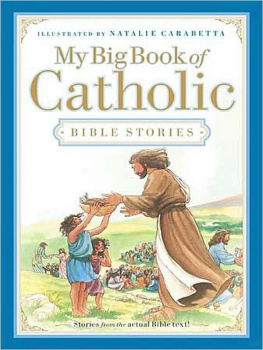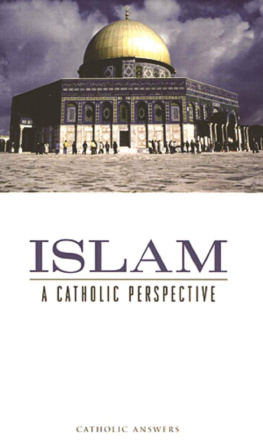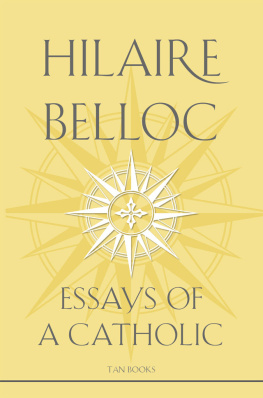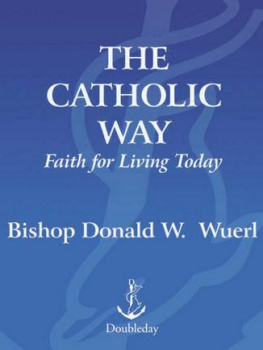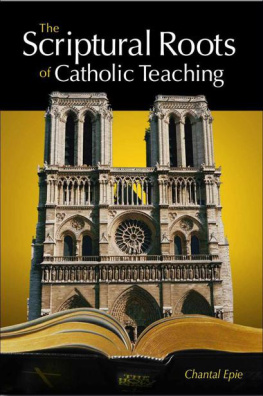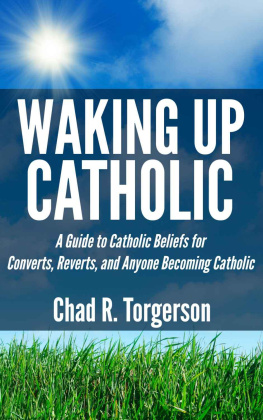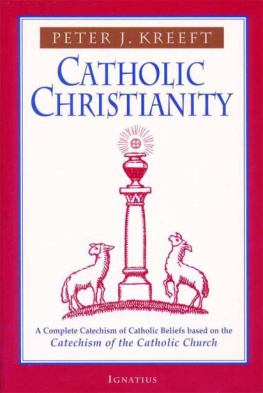J. Michael Miller - The Holy See’s Teaching on Catholic Schools
Here you can read online J. Michael Miller - The Holy See’s Teaching on Catholic Schools full text of the book (entire story) in english for free. Download pdf and epub, get meaning, cover and reviews about this ebook. year: 2006, publisher: Sophia Institute Press, genre: Religion. Description of the work, (preface) as well as reviews are available. Best literature library LitArk.com created for fans of good reading and offers a wide selection of genres:
Romance novel
Science fiction
Adventure
Detective
Science
History
Home and family
Prose
Art
Politics
Computer
Non-fiction
Religion
Business
Children
Humor
Choose a favorite category and find really read worthwhile books. Enjoy immersion in the world of imagination, feel the emotions of the characters or learn something new for yourself, make an fascinating discovery.

- Book:The Holy See’s Teaching on Catholic Schools
- Author:
- Publisher:Sophia Institute Press
- Genre:
- Year:2006
- Rating:5 / 5
- Favourites:Add to favourites
- Your mark:
- 100
- 1
- 2
- 3
- 4
- 5
The Holy See’s Teaching on Catholic Schools: summary, description and annotation
We offer to read an annotation, description, summary or preface (depends on what the author of the book "The Holy See’s Teaching on Catholic Schools" wrote himself). If you haven't found the necessary information about the book — write in the comments, we will try to find it.
The Holy See’s Teaching on Catholic Schools — read online for free the complete book (whole text) full work
Below is the text of the book, divided by pages. System saving the place of the last page read, allows you to conveniently read the book "The Holy See’s Teaching on Catholic Schools" online for free, without having to search again every time where you left off. Put a bookmark, and you can go to the page where you finished reading at any time.
Font size:
Interval:
Bookmark:
by Archbishop J. Michael Miller
Solidarity Association
Atlanta, Georgia
Published for
Solidarity Association
245 Perimeter Center Parkway, Suite 610
Atlanta, GA 30346
by
Sophia Institute Press
Box 5284, Manchester, NH 03108
1-800-888-9344
www.SophiaInstitute.com
To order more copies, contact Sophia Institute Press.
Copyright 2006 Solidarity Association
Miller, J. Michael.
The Holy Sees teaching on Catholic schools / by J. Michael Miller.
p. cm.
Includes bibliographical references.
ISBN-13: 978-1-933184-20-3
(pbk. : alk. paper)
1. Catholic schools United States. 2. Education Papal documents. I. Title. LC501.M477 2006
371.071273 dc22
2006006326
On September 15, 2005, the Solidarity Association sponsored a conference in Washington that brought together leaders with a passionate interest in the future of Catholic education in our nation. After intense discussion, they concluded that, forty years after the promulgation of the Second Vatican Ecumenical Councils Declaration on Christian Education, Gravissimum Educationis, the signs of the times require that new wine be poured into the wineskins of Americas Catholic schools. Affirming the June 2005 statement of the American bishops,
Renewing Our Commitment to Catholic Elementary and Secondary Schools in the Third Millennium, the participants committed themselves to ensuring that truly Catholic elementary and secondary schools be available, accessible, and affordable, to all Catholic parents and their children.
The meeting acknowledged the irreplaceable role that Catholic schools play in the new evangelization of America and sought to foster the cooperation of all those involved in this apostolic work. The duty of educating the young is an ecclesial responsibility shared by all members of the Body of Christ: bishops, teachers, parents, and concerned lay leaders.
By her very nature, the Church has the right and the obligation to proclaim the Gospel to all nations (cf. Matt. 28:20). In the words of Vatican IIs Gravissimum Educationis:
To fulfill the mandate she has received from her divine founder of proclaiming the mystery of salvation to all men and of restoring all things in Christ, Holy Mother the Church must be concerned with the whole of mans life, even the secular part of it, insofar as it has a bearing on his heavenly calling. Therefore, she has a role in the progress and development of education.
Catholic schools participate in the Churchs evangelizing mission of bringing the gospel to the ends of the earth. Particularly, they are places for the evangelization of the young. As ecclesial institutions, they are the privileged environment in which Christian education is carried out.
From the days of their first appearance in the United States, Catholic schools have generously served the needs of the socially and economically disadvantaged. The parochial school system has integrated millions of young Catholics into ecclesial and social life. The Solidarity Association, whose name recalls the heritage of our beloved Pope John Paul II, follows in the long tradition of St. Angela Merici, St. Elizabeth Ann Seton, St. Marguerite Bourgeoys, St. Jean Baptiste de la Salle, St. John Bosco, and countless other religious and lay people who generously dedicated themselves to Christs love for the poor, the disadvantaged, and the marginalized, as well as for the wealthy and for mid-dle-and working-class Catholics.
This booklet, based on my intervention at the conference sponsored by the Solidarity Association, deals with the Holy Sees teaching on Catholic education. Although this theme is far too vast to be adequately summarized in a few pages, I will introduce the major concerns found in post-conciliar Vatican publications on the subject. These include various papal interventions, the 1983 Code of Canon
Law in its section on schools, and the five major documents published by the Congregation for Catholic Education since Vatican II: The Catholic School (1977); Lay Catholics in Schools: Witnesses to Faith (1982); The Religious Dimension of Education in a Catholic School (1988); The Catholic School on the Threshold of the Third Millennium (1997); and Consecrated Persons and Their Mission in Schools: Reflections and Guidelines (2002). Among these documents, in particular I recommend for further study The Catholic School and The Religious Dimension of Education in a Catholic School.
After a preliminary statistical look at the current situation, I will discuss parental and government rights in education and the five benchmarks that can be used to judge a schools Catholic identity and thereby take the steps necessary to strengthen it.
Certainly there is much to applaud in the American Catholic school system that currently enrolls almost 2.5 million students in its primary and secondary schools. By any measure this is an outstanding testimony to the vigor of Catholic life in the United States.
Even so, we cannot hide the fact that the number of students in Catholic schools continues to decline. The peak was reached in 1965 when 5.5 million students were enrolled in Catholic elementary and high schools. In 1930, there were more Catholic elementary schools (7,225), with
2.5 million students, than in 2004 (6,574), with 1.78 million students. Moreover, in the same seventy-five-year period, the Catholic population tripled: from 20.2 million in 1930 to over 66 million in 2004.
Since 1990, more than 400 new Catholic schools have opened in the United States. But during that period there has been a net loss of more than 760 Catholic schools. Most of the decline has been concentrated in urban, inner city, and rural areas.
Clearly the Church in America is facing a serious challenge in serving her children and young people, one that cannot be swept under the rug or dismissed as the inevitable result of an increasingly secularized society.
In the past forty years, not only in the United States but also in most of the developed world, religious vocations have plummeted. In 1965, there were 180,000 religious sisters in the United States; today there are fewer than 75,000, of whom more than 50 percent are over seventy years of age. Moreover, in 1965 there were 3.95 sisters for every 1,000 Catholics; in 2002, there was 1.16.
Since Vatican II, Catholic elementary and secondary schools have shown a steady decline in the number of religious and priests who are administrators and teachers, and an increase in the number of laypersons who fill those positions.Today religious women constitute less that 4 percent of the full-time professional staff of Catholic schools, while 95 percent of the teachers are laypersons.
For generations religious women provided the backbone of the parochial school system in the United States, contributing to its establishment and allowing it to flourish by their generous and sacrificial apostolate. In its documents, the Holy See frequently extols the specific contribution made by religious to the Churchs educational apostolate:
Because of their special consecration, their particular experience of the gifts of the Spirit, their constant listening to the word of God, their practice of discernment, their rich heritage of pedagogical traditions built up since the establishment of their Institute, and their profound grasp of spiritual truth [cf. Eph. 2:17], consecrated persons are able to be especially effective in educational activities and to offer a specific contribution to the work of other educators.
Font size:
Interval:
Bookmark:
Similar books «The Holy See’s Teaching on Catholic Schools»
Look at similar books to The Holy See’s Teaching on Catholic Schools. We have selected literature similar in name and meaning in the hope of providing readers with more options to find new, interesting, not yet read works.
Discussion, reviews of the book The Holy See’s Teaching on Catholic Schools and just readers' own opinions. Leave your comments, write what you think about the work, its meaning or the main characters. Specify what exactly you liked and what you didn't like, and why you think so.

